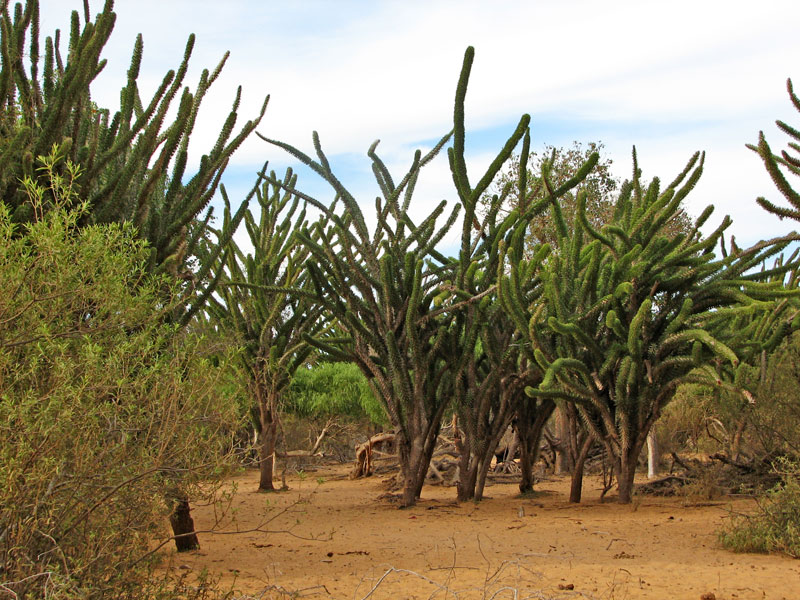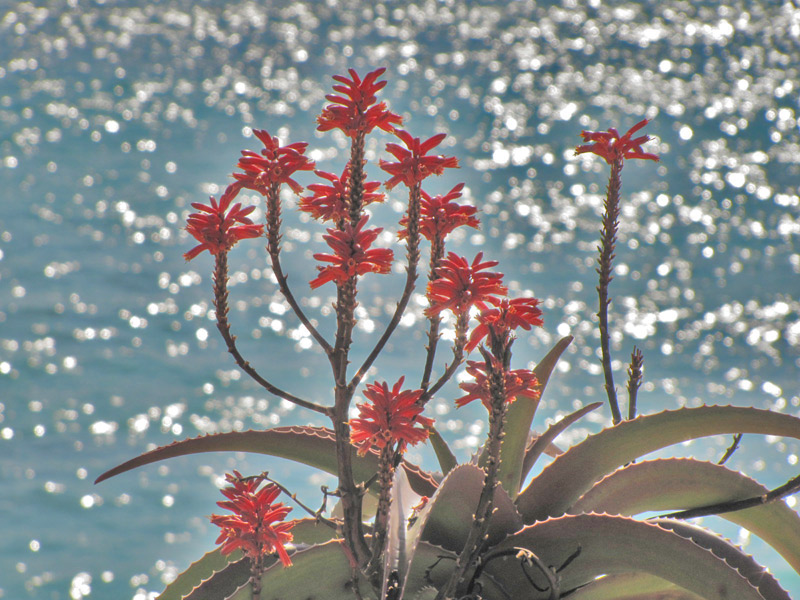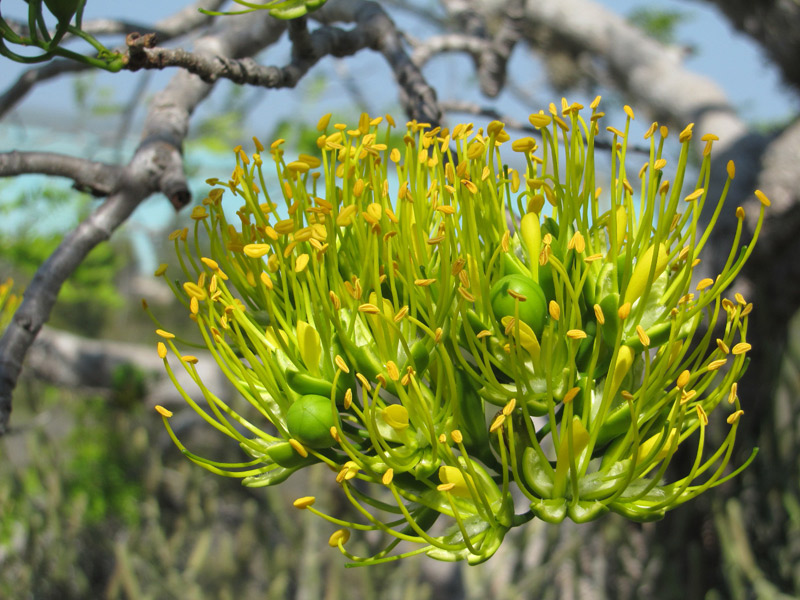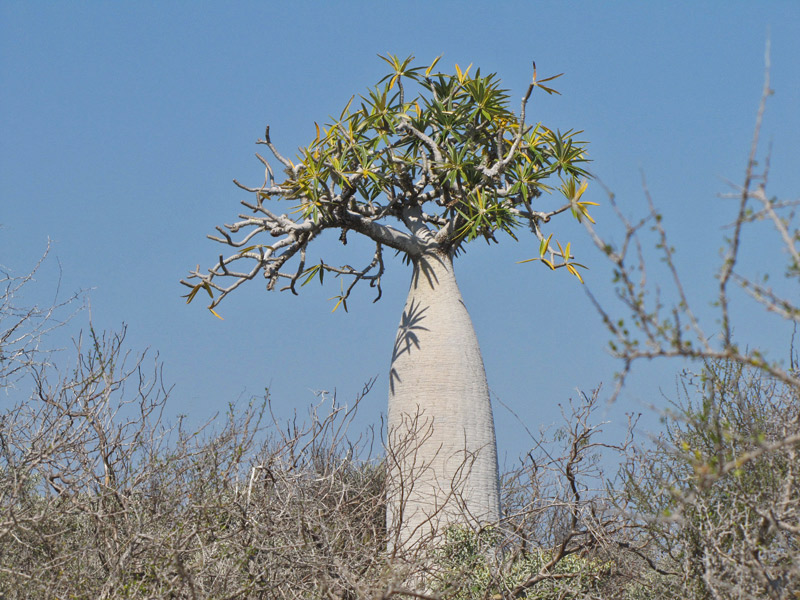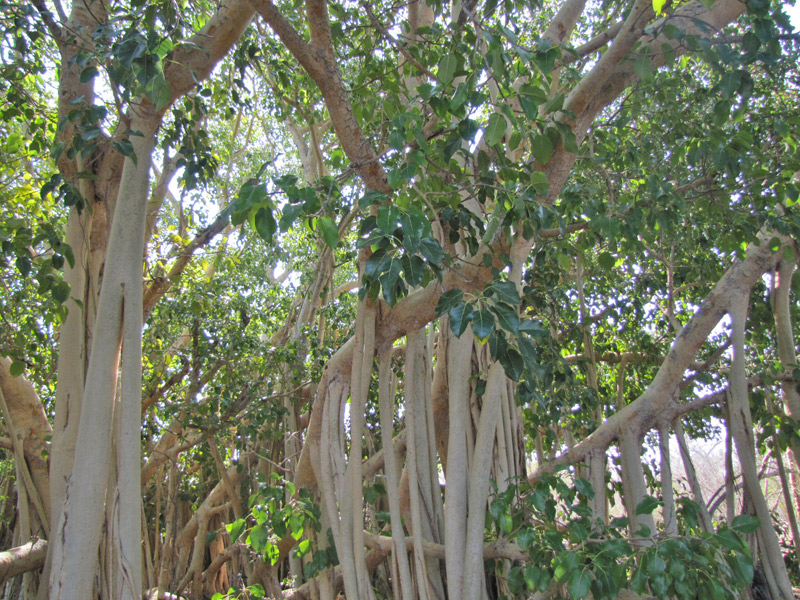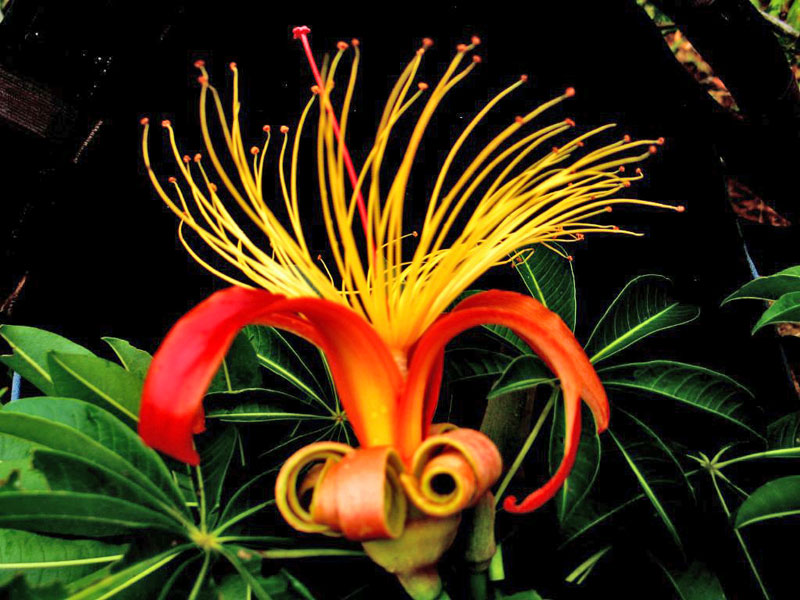Malagasy flora
The vegetation of the region is characterized by the presence of numerous endemic species. It is estimated that 90% of them are endemic. The environment is inclined to favor drought and the plants are adapted to it. Most of them have either small deciduous leaves or abundant thorns. The Malagasy thorn forest is the kingdom of succulent plants. These plants, belonging to various species, have in common the ability of storing reserves of water in their tissues.
Most of the plants are used by the population for building, coal or traditional medicine. Among the most common species you will discover:
The Euphorbia Stenoclada, commonly called Euphorbia, which plays a great role in the Anakao zone under the name Malagasy from Samata. It is a leafless arborescent plant which can reach up to 3 meters high. The Euphorbia have in common a milky sap, irritating and toxic. The young shoots are yet cut to feed zebus; the zebu carts are filled with their branches along the local paths. The whitish sap is used for the pirogues’ tightness but also against some respiratory diseases in traditional medicine.
The Didireaceae of southwest Madagascar. In the Didireaceae family, the Alluaudia shapes numerous parts of the landscape. Curiously shaped with little round leaves, thick and of a fluorescent green growing between longer thorns, they are often grouped in “forests”, growing on red sand. They can reach a few meters’ height; they shape a curious but stunning landscape at the same time. They are used to make palisades or cattle parks.
Moreover, you will get to see surprising plants: the sausage plant, the Malagasy red tree blazing, pachypodiums, halophytic plants, baobab trees…
Numerous species are threatened. Commercially exploited for bonsais for instance, the charcoal production; and under the agricultural extension: bush fires, cattle breeding, they suffer from numerous nuisances. Furthermore, some invasive species like the Sisal and the prickly pear disturb the local environment by overgrowing.


